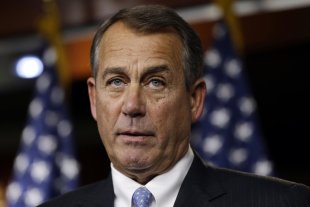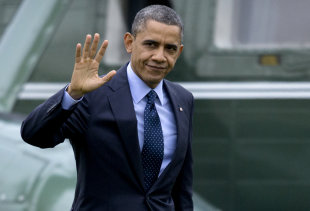MIAMI (AP) — The nation's largest gun-rights lobby called Friday for the placement of an armed police officer in every school, but parents and educators questioned how safe such a move would keep kids, whether it would be economically feasible and how it would alter student life. Their reactions ranged from supportive to disgusted.
Already, there are an estimated 10,000 sworn officers serving in schools around the country, most of them armed and employed by local police departments, according to a membership association for the officers. Still, they're deployed at only a fraction of the country's approximately 98,000 public schools, and their numbers have declined during the economic downturn. Some departments have increased police presence at schools since last week's shooting rampage at a Connecticut elementary school that left 26 dead, but say they can only do so temporarily because of funding.
The National Rifle Association said at a news conference that it wants Congress to fund armed officers in every American school, breaking its silence on the Connecticut shootings. The idea made sense to some anxious parents and teachers, but provoked outright anger in others.
"Their solution to resolve the issue around guns is to put more guns in the equation?" said Superintendent Hank Grishman of the Jericho, N.Y., schools on Long Island, who has been an educator for 44 years. "If anything it would be less safe for kids. You would be putting them in the midst of potentially more gunfire."
Where school resource officers are already in place, they help foster connections between the schools and police, and often develop a close enough relationship with parents and children that they feel comfortable coming forward with information that could prevent a threat, said Mo Canady, executive director of the National Association of School Resource Officers.
But an Oklahoma educator who teaches at a school with armed officers described the NRA's proposal as a "false solution," though she's not opposed to the presence of more police.
"I teach at a school that has four armed police officers on campus every day, but it's more than a quarter of a mile from the main office to my room, and I'm not even the farthest room away," said Elise Robillard, a French teacher at Westmoore High School. "If (a student) put a loaded gun in their bag and came to my classroom and pulled it out and started shooting, by the time the police officer figured out what was going on and got to my classroom, we'd all be dead. This whole hallway could be dead before a policeman got here."
Around the country, school systems sometimes rotate armed officers through schools or supplement them with unarmed safety agents. New York City's school district is the largest in the country with more than 1 million students. The NYPD has 350 armed officers who rotate throughout the school system, and they're supplemented by unarmed safety personnel who also report to the department. In Philadelphia, school officials have rejected armed patrols in city schools and instead use unarmed school police.
In rural Blount County, Ala., a tobacco tax is used to fund a squad of nine armed sheriff's deputies and a supervisor who are assigned to work inside the system's 16 schools on a full-time basis, superintendent Jim Carr said Friday. They also assist in sports games and other after-school events.
An armed sheriff's deputy assigned to Columbine High School the day of the massacre there in 1999 was unable to stop the violence, though police procedures around the country have changed since then.
According to a Jefferson County Sheriff's Department report released in 2000, the uniformed sheriff's deputy was eating lunch in his patrol car at a park near the school when he rushed to the school in response to a radio report about the violence. The deputy briefly exchanged fire with one of the gunmen, but the gunman ran back inside the building to continue the rampage.
The officer radioed for assistance, and police followed the then-standard procedure of waiting for a SWAT team to arrive before entering the building. Since that tragedy, police procedures have been changed to call for responding officers to rush toward gunfire to stop a gunman first.
In his speech, NRA chief executive officer Wayne LaPierre said Congress should appropriate funds to post an armed police officer in every school. In the meantime, he said the NRA would develop a school emergency response program that would include volunteers from the group's 4.3 million members to help guard children.
The NRA's call came two days after a Kentucky county sheriff announced on Facebook that deputies would have an increased school presence beginning in January. The announcement was met with dozens of notes of thanks and positive comments from parents.
"Thank you so very much," wrote one commenter. "I can stop stressing a little while at work now."
"This is the best news we could have received for Christmas!" wrote another.
Monte Evans, a sixth grade teacher in Wichita, Kan., said schools should have a designated point person licensed and trained to shoot a gun.
"What am I going to stop them with? A stapler?" said Evans, an NRA member. "You need equal force."
Rose Davis, 47, who lives in Chicago's South Side Englewood neighborhood and helps care for her two young grandchildren, said she supports the idea of having armed police officers in schools. Her neighborhood is beset by gang violence and she worries about it spilling into schools.
"With the things going on today, you really don't feel secure," she said.
Even those who support the proposal, however, questioned how practical it would be.
"The real question is sustainability," said Ken Trump, president of the Cleveland-based consulting firm National School Safety and Security Services. "In the long haul, how are you going to fund that?"
But Randi Weingarten, president of the American Federation of Teachers, one of the nation's largest teachers' unions, called the NRA's idea "irresponsible and dangerous."
"Schools must be safe sanctuaries, not armed fortresses," she said.
Republican New Jersey Gov. Chris Christie said that posting armed guards outside schools wouldn't make classrooms safer or encourage learning.
"You can't make this (school) an armed camp for kids," he said.
Jacina Haro, a college educator from Malden, Mass., and the mother of two young children said the solution shouldn't be about having more weapons on campus.
"Schools shouldn't be about guns," said the 38-year-old. "It should be a safe place to learn, free from weapons and the like. I understand wanting to protect our children, but I don't know if that's the right solution. It's a scary solution."
___
Associated Press writers Frank Eltman in Mineola, N.Y.; Maryclaire Dale in Philadelphia; Barbara Rodriguez in Des Moines, Iowa; Jason Keyser in Chicago, Sean Murphy, Oklahoma City; Colleen long in New York; Colleen Slevin in Denver and Jay Reeves in Birmingham, Ala., contributed to this report.












